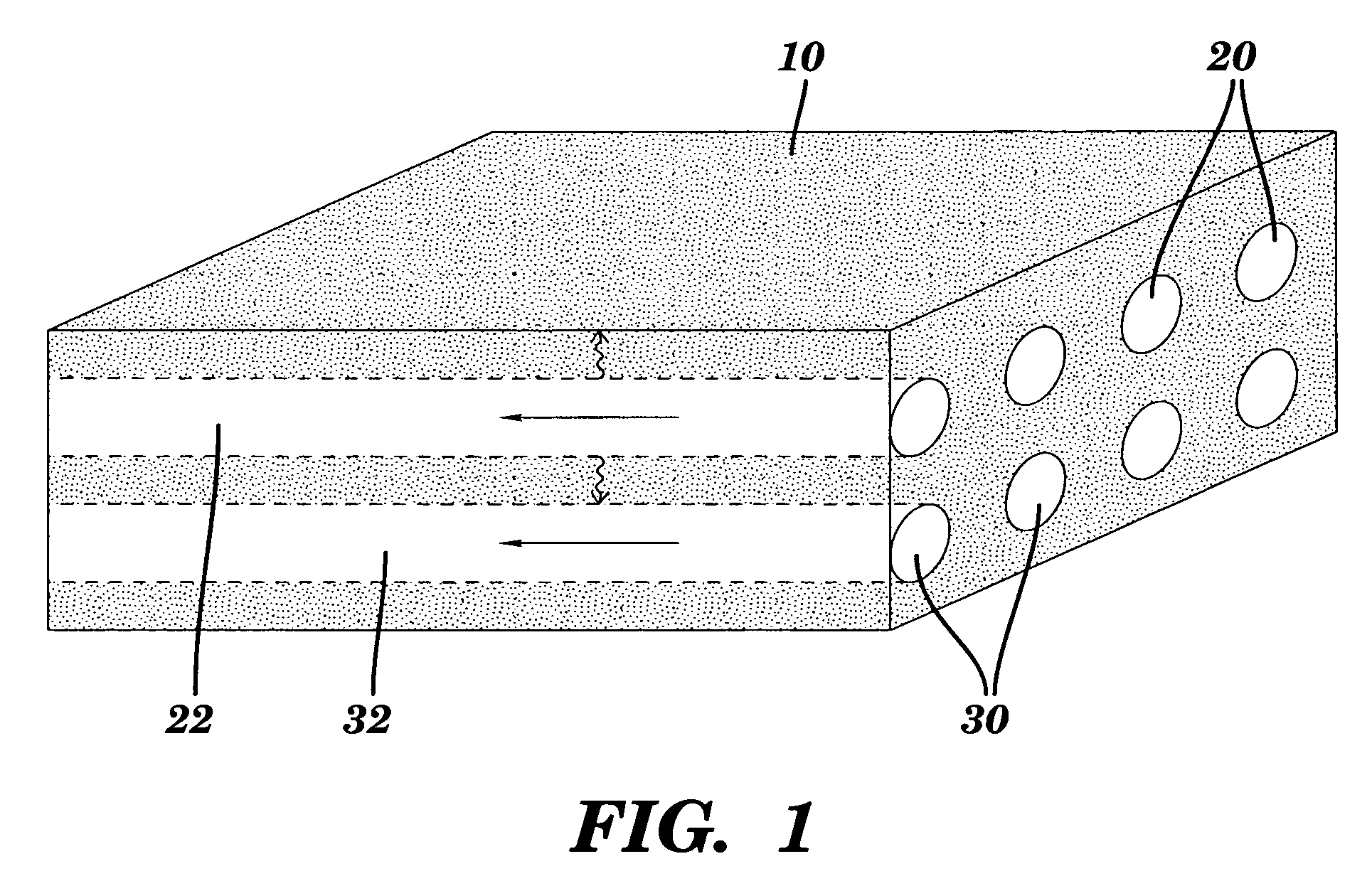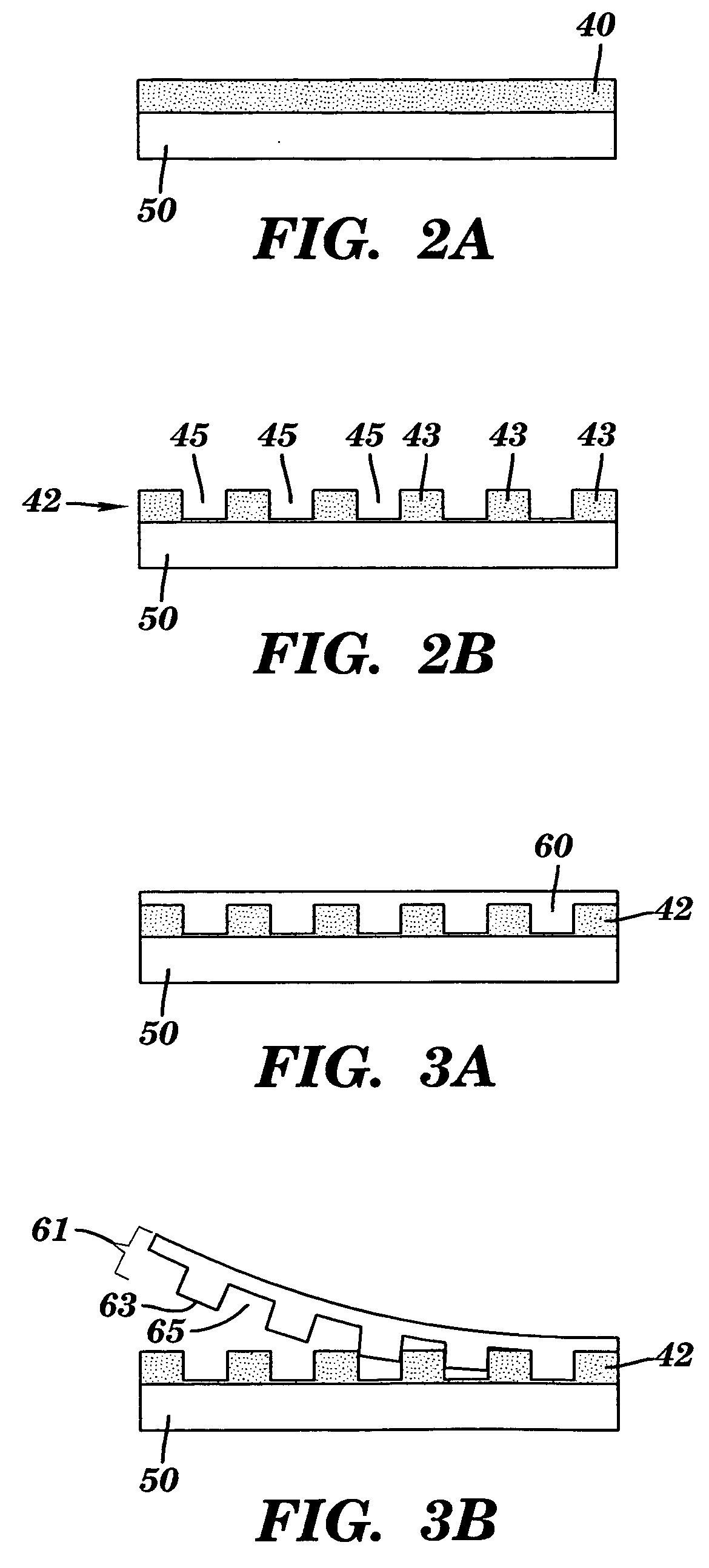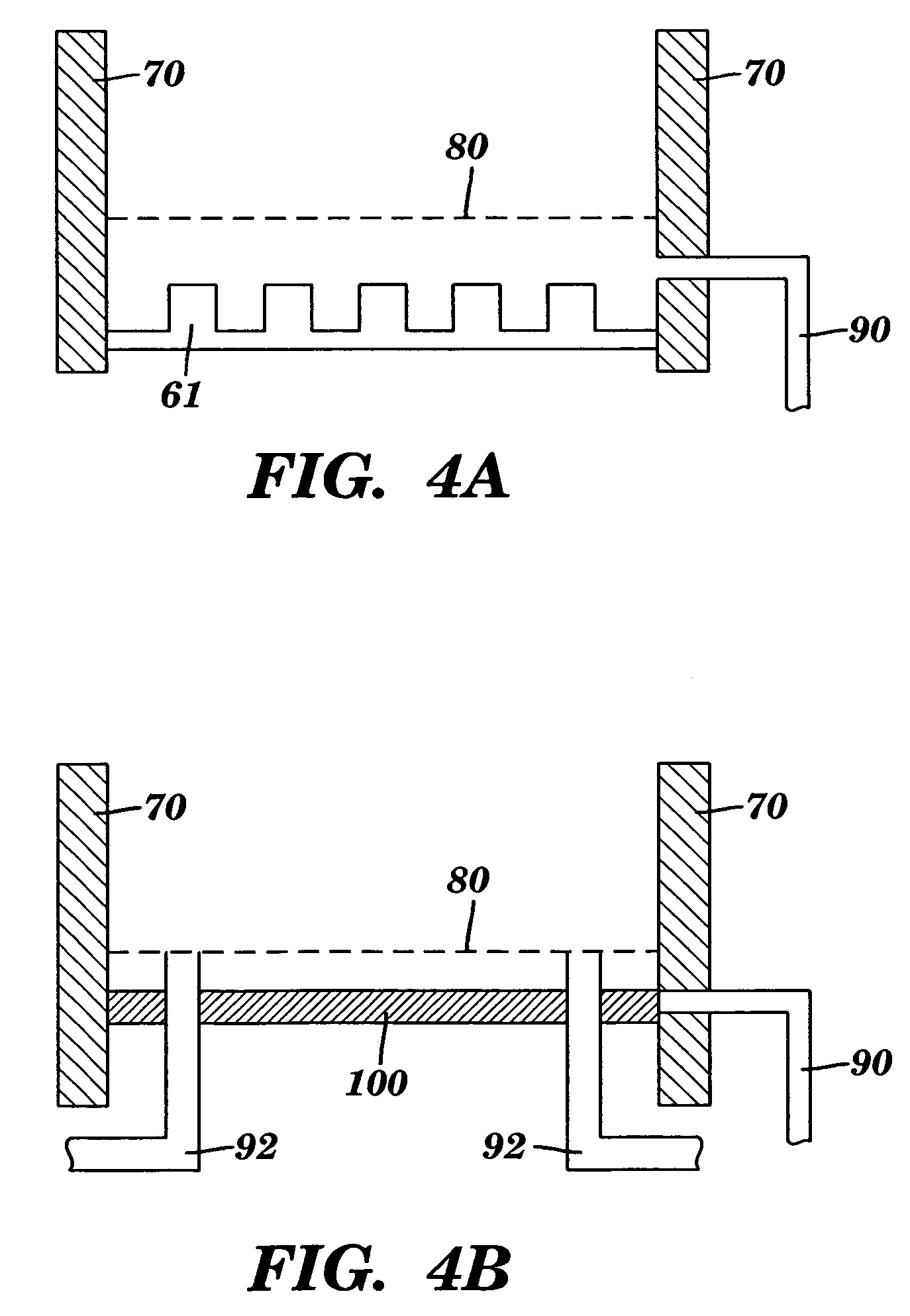Diffusively permeable monolithic biomaterial with embedded microfluidic channels
a monolithic biomaterial, diffusively permeable technology, applied in the direction of prosthesis, biocide, bandages, etc., can solve the problems of limited use, limited use, and limited options, and achieve the effect of facilitating wound healing
- Summary
- Abstract
- Description
- Claims
- Application Information
AI Technical Summary
Benefits of technology
Problems solved by technology
Method used
Image
Examples
example 1
Fabrication of a Monolithic Biomaterial
[0114]A monolithic biomaterial was fabricated having a microfluidic system entirely within calcium alginate (4% [w / v]), a versatile hydrogel. As used herein this monolithic biomaterial is also referred to as a “microfluidic biomaterial” and abbreviated as “μFBM.” Control of mass transfer within the ρFBM was demonstrated, and the μFBM was shown to be (i) appropriate for replication of the microstructure, (ii) formable into pressure-tight fluidic structures, and (iii) highly permeable to the diffusion of small and large solutes. The sealed microfluidic structure were formed to have channels that are 100 μm wide by 200 μm deep; sealed channels were formed with cross-sectional dimensions as small as 25 μm×25 μm.
[0115]Three modes of operation have been used to characterize the transfer of solute in μFBMs. In all cases, the device was submerged in a stirred reservoir (200 mL; ur˜1 cm / s) of aqueous buffer in which the solute of interest is dilute (cs,...
example 2
Experimental Methods for Delivery and Extraction of Fluorescent Dyes from μFBM
[0123]For all experiments, the μFBM (of Example 1) was submerged in a bath of 200 mL of HEPES-buffered solution with 10 mM CaCl2 in a Petri dish (15 cm in diameter). The dish sat on a magnetic stir-plate that drove a stir-bar at 200 r.p.m. in the bath. The fluid in the bath was changed before each assisted delivery. The assembly was covered by ˜0.5 cm of liquid, and the average flow speed in the liquid was estimated to be, ur˜1 cm / s. This entire assembly sat on the stage of a fluorescence stereoscope.
[0124]In order to deliver fluorescent dye to the μFBM, the inlet of the microfluidic network was connected to an elevated reservoir; the meniscus in the reservoir was maintained ˜10 cm above the sample. A peristaltic pump was attached to the outlet. The flow rates through the system could be regulated between 85 to 150 μL / min (uc=0.4-0.7 cm / s) with the controls of the pump. Solut...
example 3
Analysis of Mass Transfer in μFBM
Mass Transfer Conditions for All Experiments
[0128]The analysis and the operation of the μFBM (of Example 1) are greatly simplified at sufficiently high flow rates, where the bulk concentrations in the reservoir and the channels alone determine the concentration gradients driving the diffusion process. This condition is satisfied when the Biot numbers in both the reservoir and the channels are large, and the Peclêt number in the channels is large. The Biot number is defined as the ratio of the rate of mass transfer into the flow to the rate of diffusive mass transfer through the material, and is
[0129]Bi=kHDs / gel;
the Peclêt number is defined as the ratio of the rate of mass transfer with the flow to the rate of diffusion within the flow, and is
[0130]Pe=uchDs / liq
(Welty et al., Fundamentals of Momentum, Heat, and Mass Transfer (2000), which is hereby incorporated by reference in its entirety). Here, Ds / gel and Ds / liq are the molecular diffusivities of t...
PUM
| Property | Measurement | Unit |
|---|---|---|
| height | aaaaa | aaaaa |
| width | aaaaa | aaaaa |
| thickness | aaaaa | aaaaa |
Abstract
Description
Claims
Application Information
 Login to View More
Login to View More - R&D
- Intellectual Property
- Life Sciences
- Materials
- Tech Scout
- Unparalleled Data Quality
- Higher Quality Content
- 60% Fewer Hallucinations
Browse by: Latest US Patents, China's latest patents, Technical Efficacy Thesaurus, Application Domain, Technology Topic, Popular Technical Reports.
© 2025 PatSnap. All rights reserved.Legal|Privacy policy|Modern Slavery Act Transparency Statement|Sitemap|About US| Contact US: help@patsnap.com



